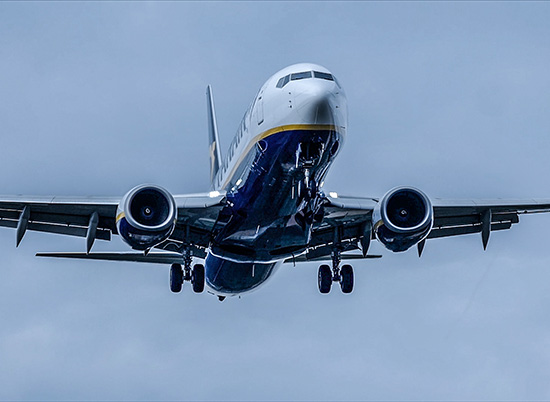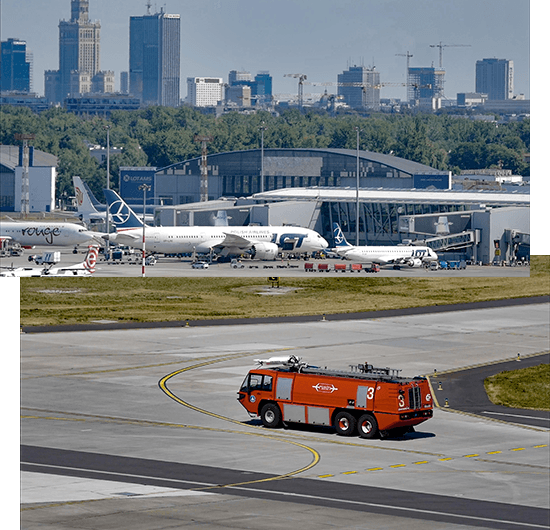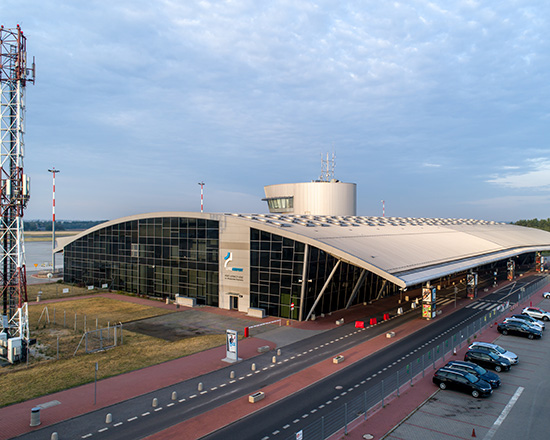Providing safety of air navigation is not an easy task. It demands the engagement of technical means and the work of a large team of top-class specialists. However, their work is not very well known, which can be explained only by the fact that a great part of technical infrastructure of air traffic control remains unseen. The observers’ attention is usually focused onto the airplanes, which are far more attractive. In addition, airways traced on maps are invisible, electromagnetic waves, a controllers’ greatest instrument, are also invisible. The only things which an observer could see are modest on-ground installations and air traffic control centers, usually hidden in inaccessible aerodrome areas or even in places which have nothing to do with aviation.
In Poland the task of managing the air traffic was entrusted to the Polish Air Navigation Services Agency.
The area of PANSA’s activity is the Flight Information Region Warszawa better known as FIR WARSZAWA. Its borderline on the ground coincides with the state’s borderline, and in the North, it goes beyond Polish territorial waters until it meets nieghbouring FIRs. Airspace in FIR is divided into two parts: controlled and uncontrolled. Air traffic services operate in both of them. Every aircraft in the controlled airspace is provided with air traffic control service. The service is established to prevent aircraft from colliding in the air, from colliding with obstacles and other aircraft in the movement area, and to improve and maintain air traffic flow in order. Controlled airspace consists of airways, where air traffic control is fulfilled by area control service (ACC), terminal control areas (TMA), where air traffic control is fulfilled by approach control service (APP) providing air traffic control service for arriving and departing aircraft, and control zones (CTR), where air traffic control is fulfilled by aerodrome control service (TWR) providing ATC service for aerodrome traffic.
Let’s try to examine closer the work of individual air traffic control services.
The first service, with which a pilot contacts , is an aerodrome control service, the so-called “Tower”, from which he gets permission to fly, to start engines and to taxi.
After take-off, the pilot contacts approach control (APP), which controls his flight to a distance of 50-100 kilometers from the aerodrome, and then control is transferred to the area control centre. ACC controls the flight until it is transferred to the APP or TWR of the target aerodrome, or until it is transferred to an adjacent FIR.
The Flight Information Service (FIS) operates in uncontrolled airspace. It gives advice and information, useful for safe and efficient flight. Operational air traffic (OAT) controllers provide control of military air traffic.
In both controlled and uncontrolled airspace an alerting service is provided.
The work of air traffic controllers is supported by other, civil and military services.
Flow Management Position (FMP), a part of European Air Traffic Flow Management (ATFM) , provides steady and expeditious air traffic flow and protects controllers from being overloaded by too heavy traffic, which can cause danger or a catastrophe.
AMC provides airspace management. Aeronautical Information Service (AIS) works for all air traffic services and airspace users. It creates, publishes and propagates all kinds of documents necessary for air navigation safety.
Failure-free work of all systems and equipment is provided by technical services.
ATC Training Centre provides courses for ab-initio students, the candidates for the work in air traffic control services, but also controllers’ refresher courses, brush-up courses, etc.
The Air Traffic Management Centre is also the headquarters of the Polish Air Navigation Services Agency. This large building has a total area of almost 19,000 square meters and the capacity of more than 88,000 cubic meters. It was built in two years. The Centre replaced a thirty year old narrow building with the tower “standing on a chicken foot”, which had seen enough service. Nowadays, the Air Traffic Management Centre is a system of simple geometric figures on the basis of a cross, with a distinctive tower. The building’s centre is the operating room situated above the technical zone. It also houses the ATC Training Centre and its simulators.


